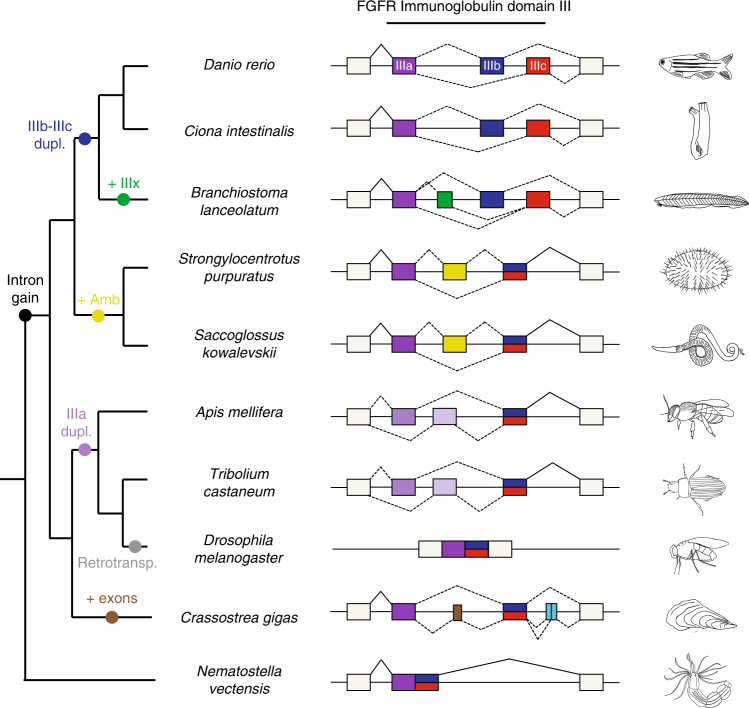Fig. 7.
Gene structure and AS at the IgIII domain of the Fgfr gene family in metazoans. Schematic representation of the AS diversity in the region encoding the homolog of the Fgfr IgIII domain for zebrafish (Danio rerio), vase tunicate (Ciona intestinalis), amphioxus (Branchiostoma lanceolatum), purple sea urchin (Strongylocentrotus purpuratus), acorn worm (Saccoglossus kowalevskii), honey bee (Apis mellifera), red flour beetle (Tribolium castaneum), fruit fly (Drosophila melanogaster), pacific oyster (Crassostrea gigas), and starlet sea anemone (Nematostella vectensis). Boxes represent exons, horizontal lines are introns, and diagonal lines connect splicing junctions. Homologous to vertebrate exons IIIa, IIIb, and IIIc are shown in purple, blue and red, respectively. The non-chordate pro-orthologous exon of exons IIIb and IIIc is colored half blue and half red. The amphioxus- and ambulacrarian-specific alternative exons are depicted in green and yellow, respectively. Light violet colors are used for the insect-specific mutually exclusive event involving exon IIIa, and brown and light blue for oyster-specific exons. Gray exons are constitutive in all species. Fruit fly orthologs (heartless and branchless) are intronless genes. Dupl: duplication; Amb: ambulacraria-specific exon; retrotransp.: retrotranscription

